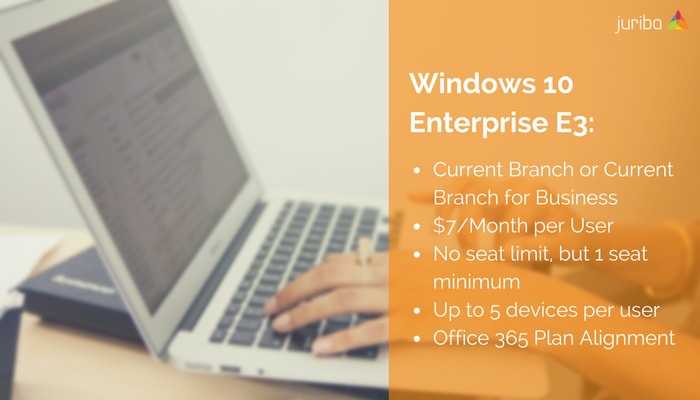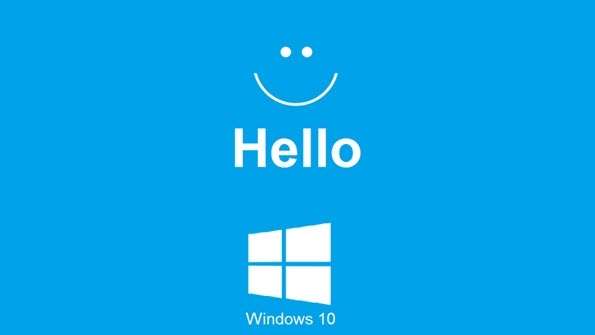Windows 10 Enterprise E3: Microsoft Will Now Charge Enterprises for Windows-as-a-Service
August 5th, 2016
4 min read
By Barry Angell

Besides requiring constant internet access and connectivity, Windows-as-a-Service also means enterprises will have to shell out a monthly fee and constant updates! For an IT professional whose professional career has been evolving around researching, preparing for, and deploying the next versions of Windows, this might take some getting used to.
CTOs and other stakeholders will now be dealing with a reality that involves paying Microsoft a monthly subscription fee to use Windows via Microsoft’s Cloud Solution Provider channel. Whether access to this new mode of Windows in the enterprise makes your organization more agile, efficient and able to compete against rivals more efficiently will remain to be seen, of course.
So, let's take a minute and dissect the news:
New Windows 10 Enterprise E3 Pricing: $7/Month/User
Windows 10 Enterprise E3 was released as a preview on August 1, 2016 and is slated to be fully available on September 1, 2016, according to a recent report from Forbes. Also, the much talked-about Windows 10 Anniversary Update was also released a few days ago. According to Yusuf Mehdi, Corporate Vice President, Windows and Devices Group, in a post on the official Windows blog, Windows 10 Enterprise E3 will cost $84 per year (or $7 per month) per person under the new program:
“Starting this fall, businesses can get enterprise-grade security and management capabilities at just $7 a seat per month for the first time through the Cloud Solution Provider channel,”

Mehdi noted that Windows 10 customers had seen an average return on investment of 188% because the system enables greater productivity and cost savings. Make sure to confer with your accounting department to get a better handle on how the new subscription pricing protocol for using Windows 10 will affect your company’s bottom line against your traditional enterprise agreement (EA).
Microsoft Is Hoping To Move Over More Small & Medium Businesses
Despite its name, Microsoft is hoping a lot of small and medium-size businesses will also be attracted to Windows 10 Enterprise E3. According to Microsoft's own data, currently, only 0.5% of SMBs running Windows are licensed to use the Enterprise Edition. This is due to the fact that until now, smaller companies were struggling to commit to the required multi-year contracts, annual up-front payments and device-based licensing that come with the Software Assurance (SA) license they would need to purchase.
By switching now to E3, all organizations who license enough E3 get Windows 10 Enterprise Edition seats to qualify for volume licensing programs will receive Software Assurance as well.
Windows 10 Enterprise E3 Features
On the bright side, Microsoft is offering Enterprise users some new features that you’ll want to take into account as you prepare for deploying the latest version. Among the most crucial changes are enhancements to security, more convenient deployment, and provisions for partners to help maintain the IT for companies looking to outsource their data:
Enhanced Security
Companies big and small are under attack from criminal hackers based all around the world and Windows Enterprise E3 (and even more E5 once released) will offer companies enterprise security on a per user basis.
 According to Microsoft partner channels. 30% of its SMB customer base in the developed world are dealing with highly sensitive financial data, handle personally identifiable and/or regulated data as well asdevelop software or intellectual property in-house which makes them an effective target for cyber criminals.
According to Microsoft partner channels. 30% of its SMB customer base in the developed world are dealing with highly sensitive financial data, handle personally identifiable and/or regulated data as well asdevelop software or intellectual property in-house which makes them an effective target for cyber criminals.
Accordingly, Microsoft has beefed up the security in Windows 10. It will help you keep all your sensitive information safe from intruders and make sure that malware and other threats to cyber security do not reach any of your team’s devices.
Of note is Windows Hello, which is a new security feature that uses biometric information to authenticate users. The system can grant you access based on facial recognition or a fingerprint scan with an internal or external fingerprint reader.
Easier Deployment
Microsoft says that it has simplified the deployment and licensing of Windows 10 in the SaaS model. For example, your IT department won’t need to waste so much time counting how many devices are in use at your organization and conducting audits. So your staff won’t get bogged down in demonstrating compliance with the subscription-based payment model now in place.
IT Management with Partners
Not all enterprise organizations have sufficient staffing levels to ease the deployment of Windows 10.
Microsoft’s newest version of Windows 10 makes it possible for partners to develop a management strategy and security protocols for enterprise clients. They can set up a customized partner portal that the company’s IT team will use to check for subscription details and the usage patterns in their enterprise.
It also makes it possible for IT partners to offer to configure and manage devices. As more and more of the organization moves into the cloud, Microsoft partners experienced in Windows 10 and cloud deployments can now help businesses develop a device security and management strategy leveraging unique Windows 10 features that they might otherwise ignore.
This, of course, also simplifies the subscription management (with one contract, one user account, one support contact, and one simplified bill) as businesses can view subscriptions and usage for Windows 10 Enterprise, and any other Microsoft cloud services purchased, in their partner portal for easier management.
Windows-as-a-Services Forces Enterprises To Continuously Manage Software Assets, Paves Way For Evergreen IT
Microsoft will only charge Enterprise customers a monthly fee for using Windows, so for the time being, consumer versions of Windows will not require SaaS. The company may be planning on seeing how the SaaS version of Windows works in the enterprise environment before it considers doing the same with consumer level Windows.
Since most organizations will already have an enterprise agreement in place which covers their Windows 10 license, the E3 plan may or may not be applicable for all businesses depending on their current deal.
However, as organizations adopt Windows 10, this "pay as you go" model will look more attractive, allowing companies to ramp up and down volumes monthly giving it much more licensing agility.
By the same token, it means that keeping on top of your assets (and associated licenses) will be critical! Therefore, enterprises will need to consider how Windows-as-a-service and continuous software asset management fits into their overall IT strategy and their possible long-term plans to implement an Evergreen IT or IT-as-a-Service strategy.
Barry is a co-founder of Juriba, where he works as CEO to drive the company strategy. He is an experienced End User Services executive that has helped manage thousands of users, computers, applications and mailboxes to their next IT platform. He has saved millions of dollars for internal departments and customers alike through product, project, process and service delivery efficiency.


